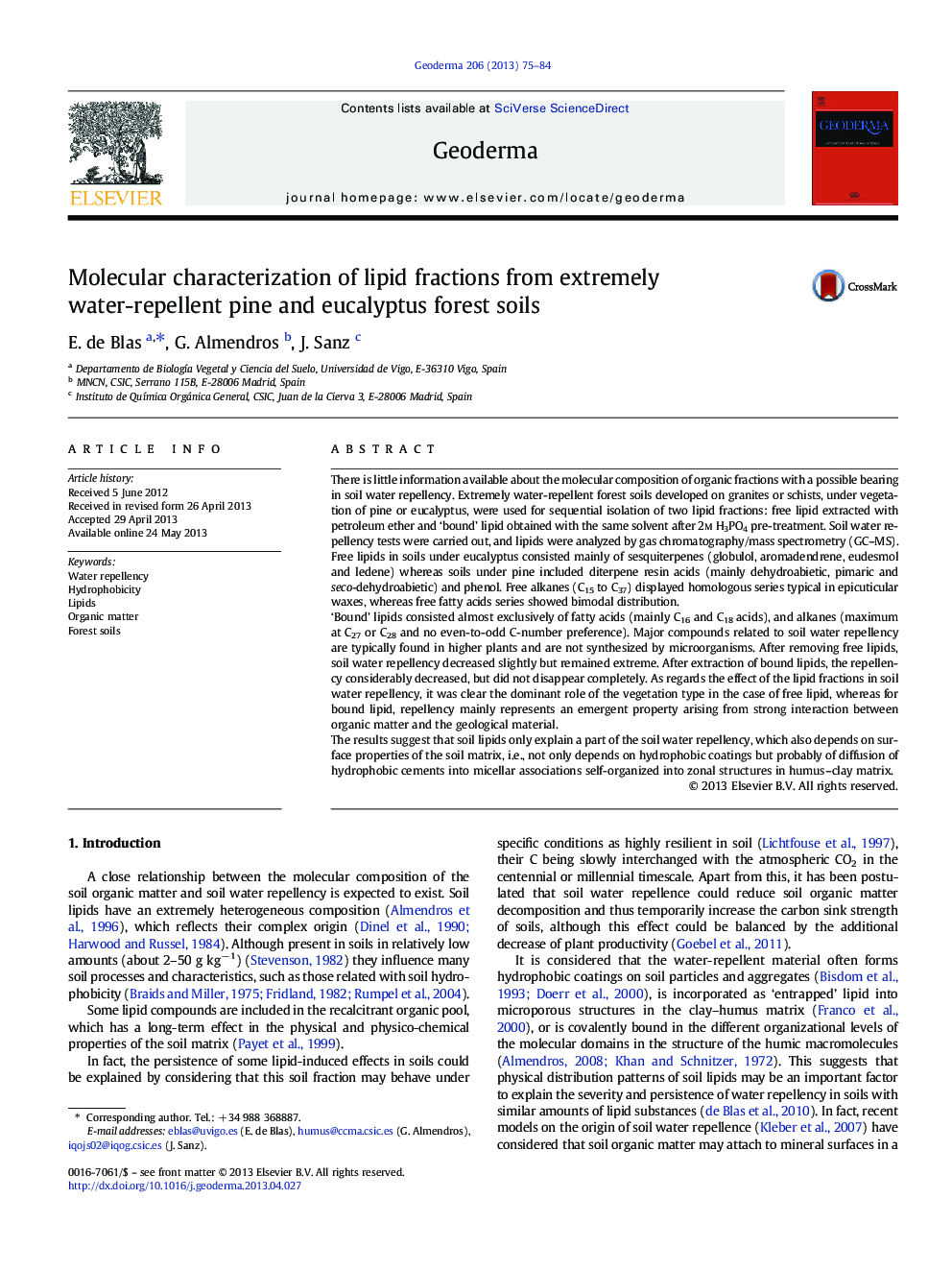| کد مقاله | کد نشریه | سال انتشار | مقاله انگلیسی | نسخه تمام متن |
|---|---|---|---|---|
| 4573476 | 1629483 | 2013 | 10 صفحه PDF | دانلود رایگان |

• We extracted free and mineral-bound lipids in 16 soils.
• We checked soil water repellency in the intermediate extraction stages.
• We study the molecular composition of lipids by GC/MS.
• Free lipids showed the dominant role of vegetation in soil water repellency.
• Mineral-bound lipids showed to the role of parent rock in soil water repellency.
There is little information available about the molecular composition of organic fractions with a possible bearing in soil water repellency. Extremely water-repellent forest soils developed on granites or schists, under vegetation of pine or eucalyptus, were used for sequential isolation of two lipid fractions: free lipid extracted with petroleum ether and ‘bound’ lipid obtained with the same solvent after 2M H3PO4 pre-treatment. Soil water repellency tests were carried out, and lipids were analyzed by gas chromatography/mass spectrometry (GC–MS). Free lipids in soils under eucalyptus consisted mainly of sesquiterpenes (globulol, aromadendrene, eudesmol and ledene) whereas soils under pine included diterpene resin acids (mainly dehydroabietic, pimaric and seco-dehydroabietic) and phenol. Free alkanes (C15 to C37) displayed homologous series typical in epicuticular waxes, whereas free fatty acids series showed bimodal distribution.‘Bound’ lipids consisted almost exclusively of fatty acids (mainly C16 and C18 acids), and alkanes (maximum at C27 or C28 and no even-to-odd C-number preference). Major compounds related to soil water repellency are typically found in higher plants and are not synthesized by microorganisms. After removing free lipids, soil water repellency decreased slightly but remained extreme. After extraction of bound lipids, the repellency considerably decreased, but did not disappear completely. As regards the effect of the lipid fractions in soil water repellency, it was clear the dominant role of the vegetation type in the case of free lipid, whereas for bound lipid, repellency mainly represents an emergent property arising from strong interaction between organic matter and the geological material.The results suggest that soil lipids only explain a part of the soil water repellency, which also depends on surface properties of the soil matrix, i.e., not only depends on hydrophobic coatings but probably of diffusion of hydrophobic cements into micellar associations self-organized into zonal structures in humus–clay matrix.
Journal: Geoderma - Volume 206, September 2013, Pages 75–84